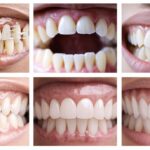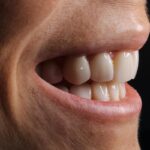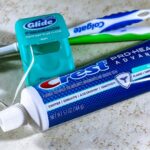Your self-image is critical to having a healthy level of self-confidence — and nothing quite impacts your self-image as much as your smile.
As Lisa Whellams at Mental Health Matters writes, “Teeth that look good can encourage a positive state of mind because they inspire confidence, and a willingness to smile more.” Gums and teeth health has a lot to do with this, but so do your jaw and tooth alignment.
With the self-image issues that come with an overbite or underbite, many turn to jaw surgery as a solution. But still, others are worried about the drawbacks and risks associated with jaw surgery. We are here to address both of those concerns.
These reasons address why considering jaw realignment is a good idea, but not jaw surgery specifically. Invasive jaw surgery is associated with a range of pain points – but there are alternatives to consider.
Downsides to Jaw Surgery
It can often be difficult to know which route to take in any decision, particularly when your health and self-image are concerned.
The Oral & Facial Surgeons of Arizona note that choosing from among multiple treatment options is complex for any of the 60 million Americans who have a misaligned or dysfunctional jaw.
Writing for Colgate, Carol Wiley gives a fantastic rundown of the risks and pain associated with jaw surgery. They include “pain, swelling, bleeding, infection and adverse reaction to anesthesia. More involved processes can theoretically damage nearby bone or gums, and the anesthetic itself may cause numbness in similar areas. You typically stay in the hospital for one to two days, and have a six-week at-home recovery time.”
The Mayo Clinic goes into further detail on the risks of jaw surgery, including nerve injury, jaw joint pain, the need for root canal therapy, problems with the right fit and sometimes even the jaw relapsing to its original position.
The possibility of relapse is of particular concern for some patients looking for a permanent solution. Unfortunately, the reality is relapse is possible in any cosmetic procedure that doesn’t find the naturally ideal jaw position.
Consider the words from the Dental-Facial Treatment Center in Ontario: A slight bit of relapse occurs with all jaw procedures. “In most instances, however, this does not significantly affect how the upper and lower teeth come together, or the facial appearance. If it does, then further orthodontics may correct the problem.”

Putting It All Together
The best-case scenario, then, is relapse is not so severe that it cannot be resolved with further surgery. In other cases, sometimes the results are not what the patient was looking for in the first place (as you will see in the story from a real patient below).
To boil all of this information down, these are the five major downsides of jaw surgery:
- It is invasive. This is unavoidable. With jaw surgery, there will be cutting and a lot of physical changes to reach the desired outcome.
- It is painful. Even with the use of anesthesia, most patients experience pain and discomfort post-surgery.
- It has a long recovery time. It can often take two weeks for a jaw surgery patient to feel able to return to school or work. Full recovery can take up to three months.
- It is associated with risks. As an invasive procedure, jaw surgery comes with the risks to health identified above.
- It may not result in what you’re looking for. Even with the long preparation and recovery time, there is no guarantee that jaw surgery will give you the results you are looking for.
Why Jaw Surgery Isn’t Always the Best Choice: A Story
Online research will yield a wealth of information about why jaw surgery may not always be the best fit for alignment correction. For example, RealSelf provides a platform for patients to provide honest reviews of their experiences with cosmetic surgery. One post from a 19-year-old student highlights why patients should be careful with their options.
The patient sought out double jaw surgery after being diagnosed with a Class III Malocclusion (a severe underbite). He felt self-conscious about his protruding lower jaw, side profile and tilted line of teeth.
Unfortunately, the results of the double procedure were not what this student was hoping for. Instead of simply correcting the underbite by finding the ideal jaw position, the procedure moved the maxilla forward to match the position of the lower jaw.
Now, the entire jaw is pushed forward. The patient wrote that he feels this makes him “look like a chimp.” The other unfortunate outcome was that his nose was flattened when the maxilla was moved forward. “I lost my former face, making me feel like I lost my identity,” the young patient concludes.
This story is just one example of the potential risks of jaw surgery.
So, what are some of the top alternatives to consider?

Alternatives to Jaw Surgery to Consider
Stories like the one above make it clear that jaw surgery does not always work out for the best. For many patients with severe malocclusions, there are other treatment options that might be a better fit.
Facial Spectrum points out that braces can realign the jaw if the case is mild enough. Expanders work a lot like a retainer, evening the spread of the patient’s teeth. Bonding and veneers do not correct the jaw itself but instead mimic jaw alignment by adding more layers.
The bottom line is jaw surgery is not a catch-all for malocclusion, especially when there are so many alternatives at hand.
Face Lift Dentistry® as an Alternative to Jaw Surgery
Dr. Sam Muslin’s trademark procedure, known as Face Lift Dentistry®, uses JawTrac® technology to locate the most comfortable position of a person’s jaw. Then, his team applies VENLAY® Restorations to the patient’s teeth to build a new bite. This can be done to correct the shape of the face, overbites, underbites, and open bites.
With Face Lift Dentistry®, there is no need for injectable fillers, braces or clear aligners. Dr. Sam’s treatment methodology can correct someone’s bite and jaw position in as few as a couple of visits. It is not invasive, not painful and much faster than jaw surgery.
Considering the pain, risks and recovery time of jaw surgery, this may be an alternative treatment worth investigating.
Images by: bravissimos/©123RF Stock Photo, stylephotographs/©123RF Stock Photo, Katherine Hanlon









